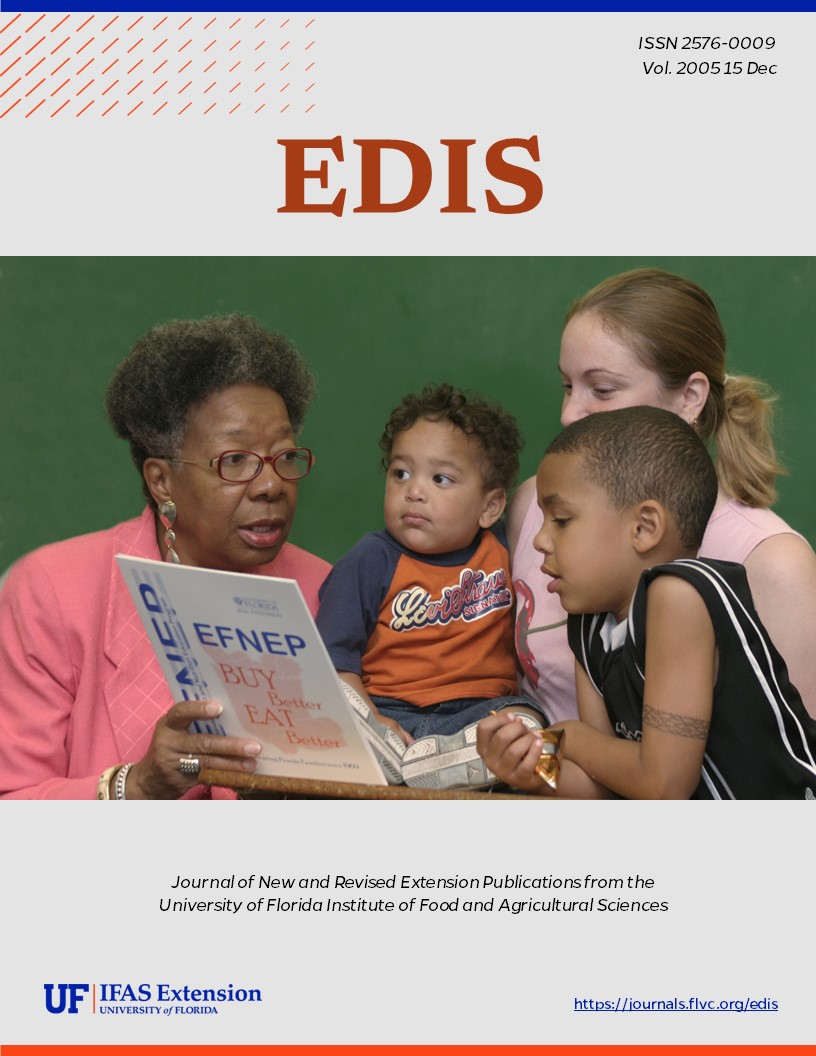Abstract
The dairy industry utilizes the concept of differences in nutrient requirements of different cows within the herd and manages nutrient supply accordingly. In that regard, the dairy industry approaches different cow nutrient requirements by implementing phase feeding in the cow herd. Phase feeding is defined as: changing the nutrient concentrations in a series of diets formulated to meet an animal's nutrient requirements more precisely at a particular stage of growth or production. Phase feeding in the dairy industry is implemented based on placing cows into multiple feeding groups based on their lactation status. The phase feeding strategy is utilized to address the different nutrient requirements associated with milk production intensity. The dairy industry addresses the nutrient requirements of cows not on a singular basis but on a multiple nutrient basis. This document is AN157, one of a series of the Animal Sciences Department, UF/IFAS Extension. Original publication date October 2005.
AN157/AN157: Phase-Feeding the Beef Herd for Improved Feed Utilization (ufl.edu)
References
Blasi, D. A. 1995. Alternative beef cow supplementation strategies. Beef Tips Dec. Kan. St. Univ. Ext. Ani. Sci. and Indust.
Bowman, J. P., and B. F. Sowell. 1997. Delivery method and supplement consumption by grazing ruminants: a review. J. Anim. Sci. 75: 543-550. https://doi.org/10.2527/1997.752543x
Gadberry, S. 2003. Grouping the commercial beef herd for winter feeding. Univ. Ark. Coop. Ext. Serv. FSA3033-PD-6-03RV.
Houghton, P. L., R. P. Lemenager, L. A. Horstman, K. S. Hendrix, and G. E. Moss. 1990. Effects of body composition, pre- and postpartum energy level and early weaning on reproductive performance of beef cows and preweaning calf gain. J. Anim. Sci. 68: 1438-1446. https://doi.org/10.2527/1990.6851438x
NRC. 1996. Nutrient Requirements of Beef Cattle. 7th rev. ed. Natl. Acad. Press, Washington DC.
Sawyer, J. E., C. P. Mathis, and B. Davis. 2004. Effects of feeding strategy and age on live animal performance, carcass characteristics, and economics of short-term feeding programs for culled beef cows. J. Anim. Sci. 82: 3646-3653. https://doi.org/10.2527/2004.82123646x
Sinclair, K. D., S. Yildiz, G. Quintans, F. E Gebbie, and P. J. Broadbent. 1998. Annual energy intake and the metabolic and reproductive performance of beef cows differing in body size and milk potential. Anim. Sci. 66: 657-666. https://doi.org/10.1017/S135772980000922X
Sowell, B. F., J. G. P. Bowman, E. E. Grings, and M. D. MacNeil. 2003. Liquid supplement and forage intake by range beef cows. J. Anim. Sci. 81: 294-303. https://doi.org/10.2527/2003.811294x
Thrift, F. A., and T. A. Thrift. 2003. Review: Longevity attributes of Bos indicus x Bos taurus crossbred cattle. Prof. Ani. Sci. 19: 329-341. https://doi.org/10.15232/S1080-7446(15)31438-8
Varel, V. H., and K. K. Kreikemeire. 1999. Low-and high-quality forage utilization by heifers and mature beef cows. J. Anim. Sci. 77:2774-2780. https://doi.org/10.2527/1999.77102774x
Wiltbank, J. N., W. W. Rowden, J. E. Ingalls, K. E. Gregory, and R. M. Koch. 1962. Effect of energy level on reproductive phenomena of mature Hereford cows. J. Anim. Sci. 21: 219-225. https://doi.org/10.2527/jas1962.212219x

